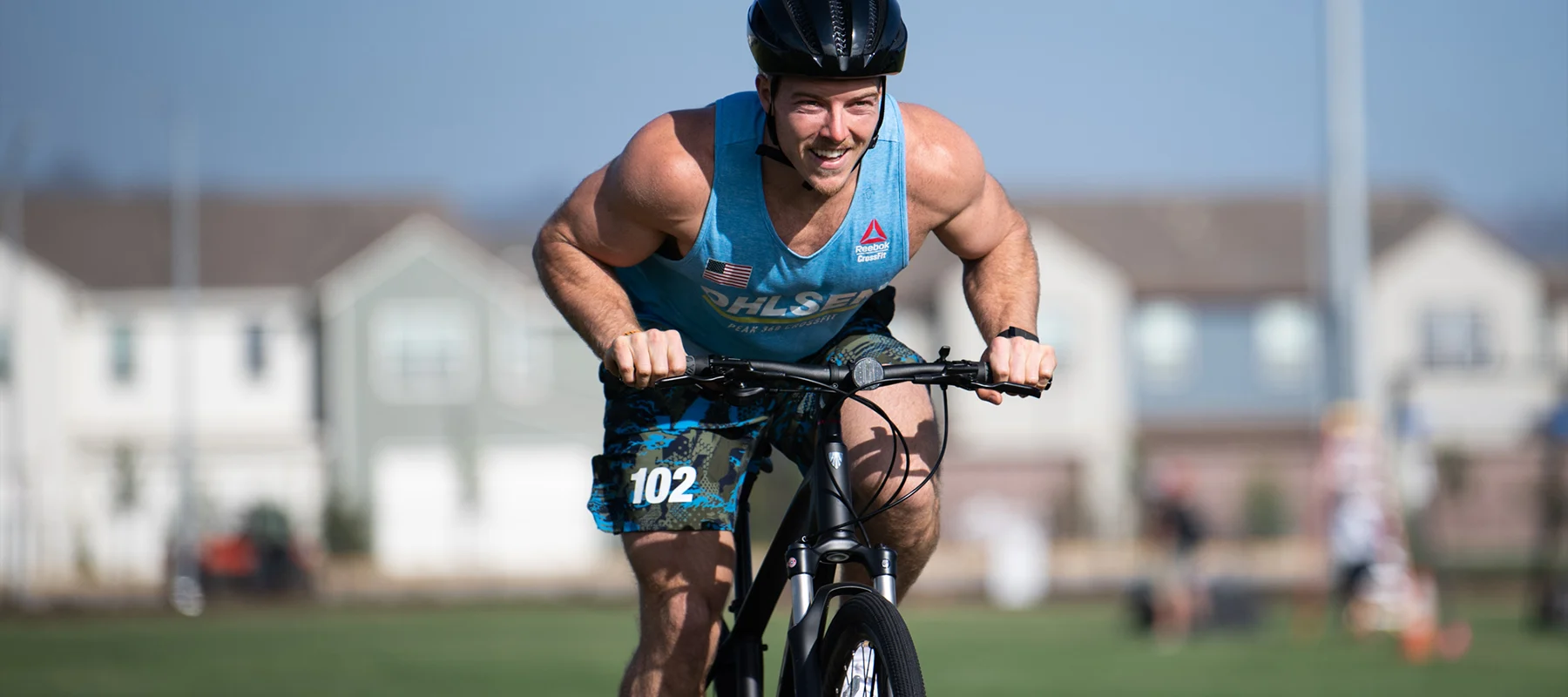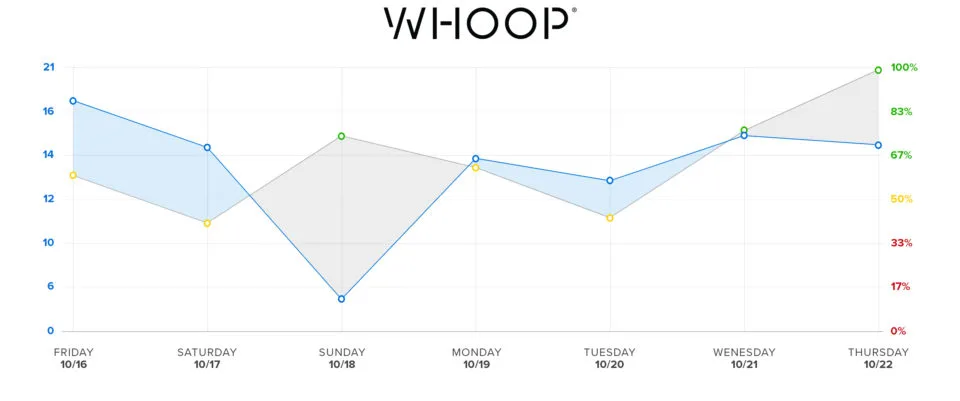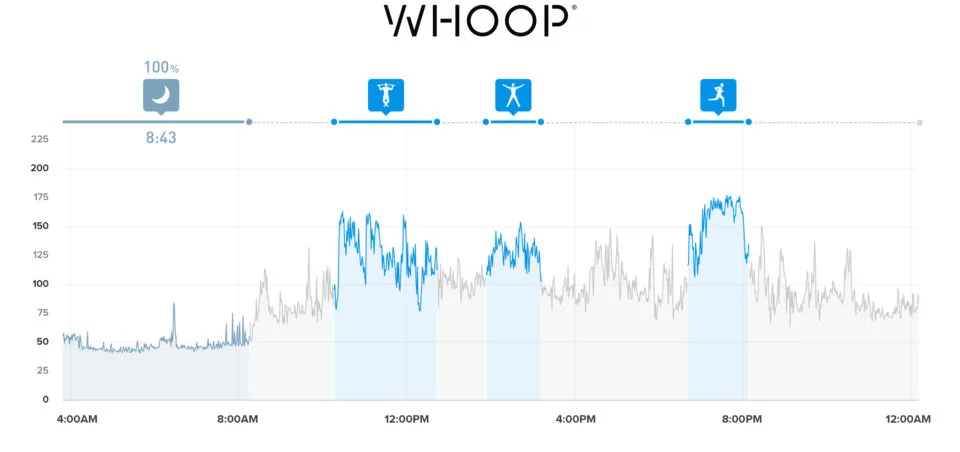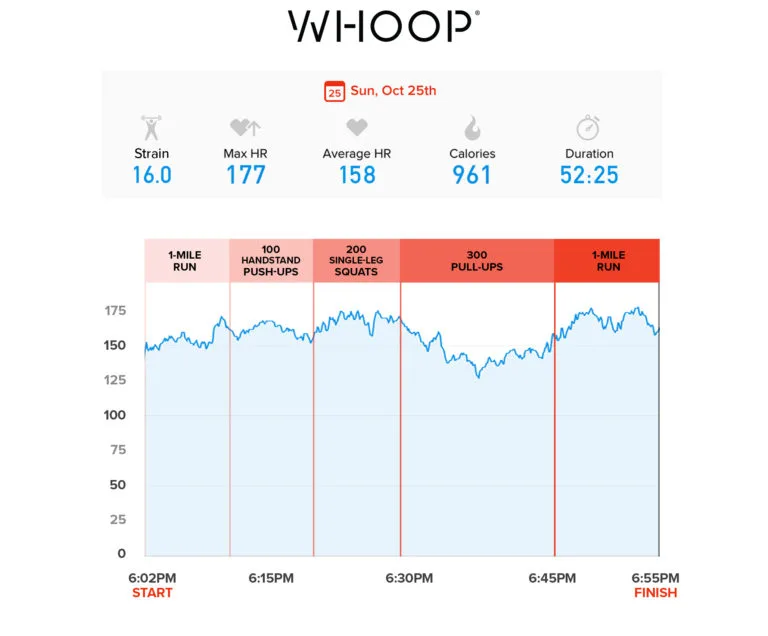Topics
- Article
- CrossFit
- Member Stories
Noah Ohlsen’s Biometric Data from CrossFit Games & Hardest Workout Ever

One of the favorites to take home the title this year, Noah Ohlsen finished second in the CrossFit Games’ final event of 2020, Atalanta. Here’s a glimpse inside his WHOOP data.
With the 2021 CrossFit Games getting underway, we take a look back at last year’s Games and the performance of one of the sport’s top athletes, Noah Ohlsen. In particular, we break down Noah’s WHOOP data and the impact of Atalanta, dubbed the most difficult workout in the history of the Games.
Primed to Perform: Recovery and HRV Peaking
On October 22, the day before the finals of the 2020 CrossFit Games began, Noah Ohlsen’s heart rate variability (HRV) was 141 milliseconds, a fantastic number relative to his baseline and a great sign that his body was ready to perform. HRV is a major component of the WHOOP recovery metric, an indication (from 0-100%) of how prepared your body is to take on strain. Noah’s recovery that morning was 99%. His 3-day trends for HRV (75 ms, 105 ms, 141 ms), resting heart rate (45 bpm, 44 bpm, 42 bpm) and recovery (43%, 76%, 99%) were all headed in the right direction. Noah also did an excellent job balancing his daily WHOOP strain (a measure of cardiovascular exertion on a 0-21 scale) and recovery leading up to the Games. Keeping his strain on par with what his body could handle each day allowed for him to be in peak physical condition prior to competing against the fittest on Earth.

Noah's daily strain (blue) fell in line with or below his daily recovery (yellow/green) in the week leading up to the Games, culminating in a recovery of 99%.
Strain of the CrossFit Games
The night before Day 1 of the Games, Noah got 100% of the sleep his body needed. He also had a very solid 3 hours and 46 minutes of restorative sleep (time spent in REM and deep sleep). Being fully rested and properly recovered was essential, as the first day of the Games was incredibly challenging. Noah competed in five events, leading to an overall day strain of 20.5. Below is a graphic displaying his heart rate for the entire day:

Noah's heart rate Spanning Day 1 of the Games, with the most strenuous moments highlighted.
His HR peaked at 179 beats per minute at the end of the final workout of the day, the Ranch Loop. It was announced as a 3-mile run across varying terrain, but upon reaching the finish line the athletes were told they had to run a second lap. The immense strain of Day 1 absolutely crushed Noah’s recovery for Day 2, which was just 6%. “I remember waking up that morning and opening the [WHOOP] app,” Noah said. “I shook my phone and said ‘It must be broken, right?’ It was just a beatdown of a day, physically and emotionally.” His HRV also fell all the way down to 50, and his RHR jumped to 59. Another four events led to a 17.8 strain for Noah on the second day of the Games.
Atalanta Heart Rate Data
The last day featured three more grueling workouts, concluding with one deemed the hardest ever at the Games--Atalanta. It consisted of:
- a 1-mile run
- 100 handstand push-ups
- 200 single-leg squats or “pistols”
- 300 pull-ups
- another 1-mile run
All while wearing a 20-pound vest. When Noah and the other Games athletes learned of the absurd task that was about to be asked of them, he thought to himself “I’m just going to do what I can with what I’ve got.” He ended up placing second in the event, finishing with a time of 52 minutes and 25 seconds. You can clearly see the effect the various activities had on his body by viewing his real-time heart rate data:

Noah's HR metrics for Atalanta, the most difficult CrossFit Games workout ever.
Noah’s HR immediately rose to around 150 bpm as the first run began, then elevated higher as he neared the end. It spiked again during the handstand pushups, and went up even more as he executed the single-leg squats. “I tried to move pretty quickly on the pistols,” he told us, “I knew I could make up some ground. Somewhere in the middle I felt a pop in my calf near my achilles. I remember thinking ‘That is not good.’ I did a rep on it to test it and make sure I could continue.” Luckily Noah was able to keep going, and he performed spectacularly on the pull-ups. His HR actually dipped to its lowest point during the event (yet still above 125) as he took the lead heading into the last leg.
“I ended up being the first one to start that final mile. I remember thinking, 'Holy smokes, I’m rocked right now.' Unfortunately this is the part that’s really going to eat at me forever. When I was about 800 meters into the run, all the muscles in my lower body were right on the verge of cramping. I could barely keep one foot moving in front of the other and I was more shuffling my feet than running. I felt like I had the physical capacity to run, but if I went any faster my legs were going to fully cramp and I was going to fall over. As much as I hated to do it, I took a few steps just walking while watching Mat Fraser slowly distance himself in front of me.”
Noah needed to win the Atalanta workout to land on the podium and place third overall at the Games. “Even knowing that, struggling inside, screaming at myself to run faster, I physically just couldn’t get my body to do it,” he said.
Recovery Back to Green
Atalanta, the Games’ last event, logged an activity strain of 16.0 over the 52+ minutes Noah was competing. The morning afterwards, his recovery was only 4%, in the red for a third straight day. Following the massive stress his body took on over the course of the Games, Noah’s HRV dropped even further to 42, and his RHR climbed again to 63. Desperately in need of rest, Noah gave his body exactly what it wanted. He kept his strain below 8.0 for the next three days, which was precisely how long it took to get his recovery back into the green.